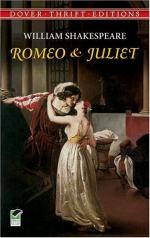|
This section contains 4,479 words (approx. 15 pages at 300 words per page) |

|
SOURCE: Krims, Marvin. “Romeo's Childhood Trauma?—‘What Fray Was Here?’” PSYART: A Hyperlink Journal for Psychological Study of the Arts, 3 (November 1999): article no. 991022.
In the following essay, Krims offers a psychoanalytic reading of Romeo as the victim of a sexualized childhood trauma later reenacted in the concluding scene of Romeo and Juliet.
The fault, dear Brutus, is not in our stars, But in ourselves …
Despite its popularity, some critics have considered Romeo and Juliet flawed because it is “not tragic in the Aristotelian sense on the grounds that the outcome does not flow out of the faults of the characters but results from fortuitous happenings” (Cox 379). Psychoanalytically informed criticism, however, has shown again and again that, if one reads the characters as “real people,” their unconscious conflicts will provide a logic or psychologic to their tragic fate. If we think of Romeo—or Romeo's language—as speaking within...
|
This section contains 4,479 words (approx. 15 pages at 300 words per page) |

|


